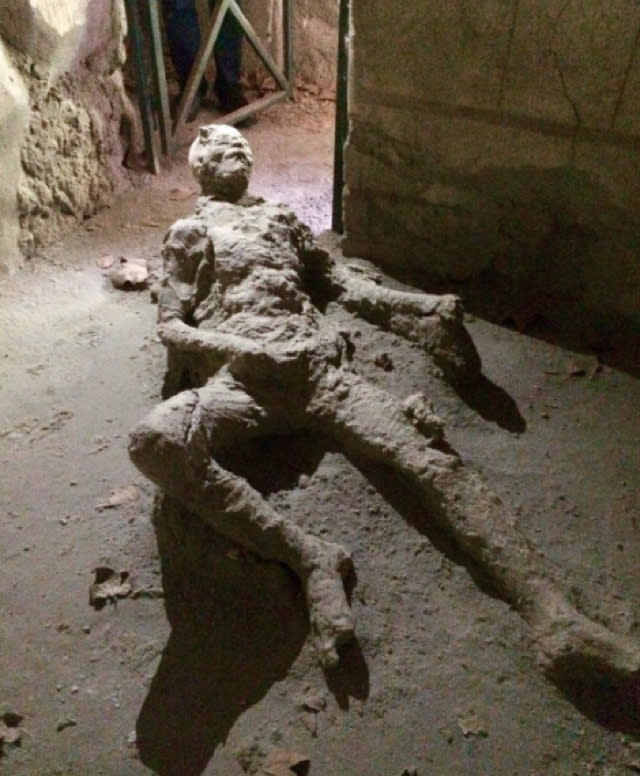What was this Pompeii victim doing when he died?

A picture of a Pompeii victim has sparked cheeky suggestions that he was masturbating as the Mount Vesuvius volcanic eruption took his life.
A photo of a preserved body from Pompeii during the eruption of Vesuvius in 79 AD has gone viral after sparking a lot of interest about how the man spent his last few minutes on Earth.
See also: A new Pompeii? Cambridgeshire archaeologists in Bronze Age dig
See also: The 10 worst volcanic disasters in human history
It was first shared online at the Pompeii Archaeological Park Instagram account.
The photo has kicked off a host of jokes about what the man was up to when he died.
A Good Day to Die Hard
Bruce Willis— Cognitive Product (@_eknock) July 2, 2017
When someone says evacuate, but you thought they said ejaculate.....
— David Tossell (@DavidTossell) July 2, 2017
He held on till the very end......great man
— EfeTobore (@tobasamuels) July 2, 2017
Masturbating man, Pompeii, 79 CE
He died doing what he loves the most. RIP pic.twitter.com/JgiQMmj7ro— I hate memes (@simply_ebin) July 4, 2017
this post dedicated to the memory of the pompeii guy who was immortalized in ash cranking his hog pic.twitter.com/rR9AkDA3xY
— Goth Ms. Frizzle (@spookperson) July 3, 2017
However, despite the jokes, volcanologist Pier Paolo Petrone put the idea to rest. According to the Metro, he said: "There is no way to demonstrate any 'masturbating man' and it is out of place to discuss such an affirmation of some young time waster.
"The individual in the photo is an adult man, killed by the hot pyroclastic surge – hot gas and ash cloud which killed most of the population living around Mount Vesuvius – with both arms and legs flexed due to the heat.'
He added that the man's hands may have ended up in the pose post-mortem. According to news.com.au, he said: "Most of the human victims found in Pompeii often show 'strange' position of arms and legs, due to the contraction of limbs as a consequence of the heat effect on their bodies after death occurred."
Pompeii was an ancient Roman town near modern Naples, in the Campania region of Italy, in the territory of the commune of Pompei.
By the time of its destruction, its population was estimated at 11,000 people, and the city had a complex water system, an amphitheatre, gymnasium, and a port.
The eruption destroyed the city, killing its inhabitants and burying it under tons of ash.
The site was lost for about 1,500 years until its initial rediscovery in 1599 and broader rediscovery almost 150 years later by Spanish engineer Rocque Joaquin de Alcubierre in 1748.
The objects that lay beneath the city have been preserved for more than a millennium because of the long lack of air and moisture. These artefacts provide an extraordinarily detailed insight into the life of a city during the Pax Romana.
During the excavation, plaster was used to fill in the voids in the ash layers that once held human bodies. This allowed archaeologists to see the exact position the person was in when he or she died.
Pompeii has been a tourist destination for over 250 years. Today it has UNESCO World Heritage Site status and is one of the most popular tourist attractions in Italy, with approximately 2.5 million visitors every year.




